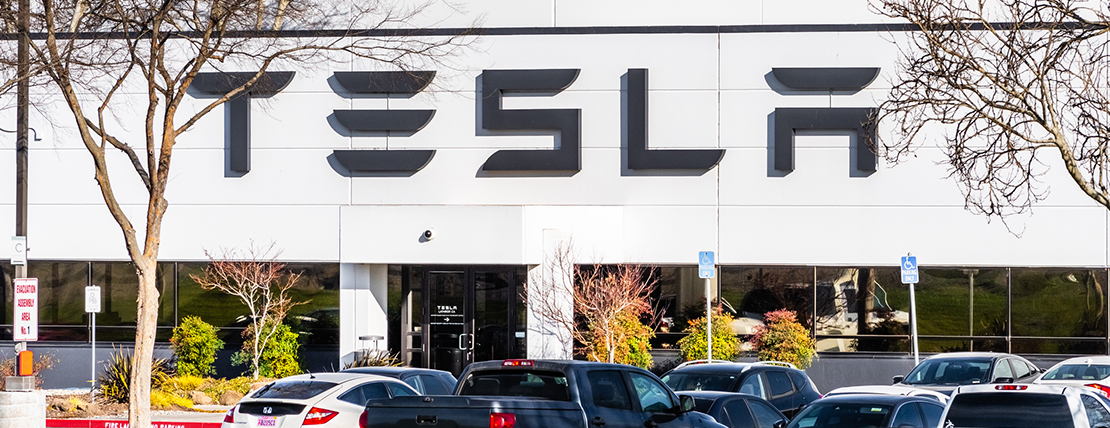As reported by CBS News, Tesla workers at a plant in Buffalo, New York, announced a campaign to form what would be the electric car company's first union, setting up a potential clash with CEO Elon Musk.
Workers in Tesla's Autopilot division emailed a letter Tuesday to management announcing their intent to unionize and asking the company to stay neutral in the campaign.
The Autopilot union has roughly 800 workers, who analyze data to help the car's self-driving software, and about 1,600 in the Buffalo plant overall, according to an organizer with the campaign.
“This is really only a fight to make a good job better,” Keenan Lasch, one of the campaign's organizers, said in a statement announcing the union drive. “We are paid far less than the national average for our job title and have next to no sick time. We are only asking for a seat in the car that we helped build.”
The Tesla workers are seeking to join Workers United, a new union that has organized hundreds of Starbucks stores in the past year, starting with a Starbucks in Buffalo — a few miles from the Tesla store. The workers are being helped in the effort by Jaz Brisack, one of the leaders of the Starbucks union who resigned last fall, saying the coffee chain forced her out in retaliation for her union activity.
The group is likely to face pushback, as Musk has previously indicated his displeasure with unions, referring to them as “another corporation,” and if workers at the California plant unionized, they would lose stock options.
The New York Times reported on Friday that Tesla has fired the Buffalo employees seeking to organize a union.
Americans Are Taking Less Vacation Time Than Ever
An analysis done by the Washington Post based off U.S. Census Bureau data revealed that Americans are taking less vacation time than ever.
The analysis determined that the percentage of people taking vacation time away from work in a given week has fallen steadily, from 3.3% of the workforce in 1980 to 1.7% today. Additional analysis shows the drop-off has been driven by workers' failure to take full-week vacations.
The Post estimated that shorter absences have risen slightly, as more folks take a day here and there for quick trips, midweek errands or mental health. But that bump is too small to offset the sharp drop in luxurious, week-plus vacations.
It does not seem to be a matter of vacation-day supply, the Post surmised. It is true that the United States is the only advanced economy without guaranteed paid vacation. However, BLS data on employee benefits suggests that more than 90% of full-time, private-industry workers have access to paid vacation time, a figure that has remained relatively steady for decades. And the number of paid vacation days offered by the typical employer has ticked up in recent years.
The analysis concludes that paid time off (PTO) plans increasingly deployed by employers is the likely culprit for why this decline has occurred. Rather than having dedicated sick days in addition to vacation days, organizations utilize a set PTO bank encompassing all time off, which could make employees reluctant to use all of it purely for vacation, for fear they will need it for health or personal days.
YouTube CEO Is Stepping Down
As reported by the Wall Street Journal, Susan Wojcicki, the CEO of YouTube, revealed she plans to step down from the position after nearly a decade in the role.
In a blog post on Thursday, Wojcicki said she plans to focus on her family, health and personal projects. She will also have an advisory role at Google and Alphabet Inc., which owns YouTube. Neal Mohan, chief product officer, will be the new head of YouTube, according to the blog post.
“Susan has built an exceptional team and has in Neal a successor who is ready to hit the ground running and lead YouTube through its next decade of success,” Google CEO Sundar Pichai said in a statement.
The Journal noted that the leadership change follows a drop in YouTube's advertising business, and amid a period where the platform has begun emphasizing subscription packages such as its YouTube TV cable bundle. Ad revenue fell 7.8% in the fourth quarter from the same period in 2021, the second decline on record following a drop in the third quarter.
Wojcicki, 54, has been with Google for 25 years, starting as the company's first marketing manager. After many additional roles in the company, she was named CEO of YouTube in 2014. Since taking over, she's been credited with turning YouTube into a rising destination for advertisers and pushing into new business lines, part of a vision for creating a one-stop shop for online video, the Journal noted.
Wojcicki was one of a small percentage of female CEOs serving at an S&P 500 company, with YouTube's parent Alphabet Inc. having one of the largest market caps in the world. YouTube reported $29.2 billion in advertising revenue last year. It has also waded deeper into TV by building an online marketplace for streaming services and striking a $2 billion per year deal with the NFL for its Sunday Ticket franchise rights.
The Journal reported that Wojcicki will remain in her role on the board of Salesforce.
Hybrid Workers Are Earning More Than Remote and In-Person Workers
Recent data from WFH Research found that hybrid workers who spend one-to-four days in the office a week earn more than people with fully remote or in-person jobs.
The research, as reported by CNBC, found that hybrid workers make at least $80,000 per year on average. Remote employees, in comparison, make about $74,000. Those who never work from home — typically employees who have to physically be in the workplace to provide a service or use special equipment — are the lowest-earning group, averaging $55,000.
One of the researchers provided the caveat to CNBC that while a person's working arrangement is one factor in someone's earnings, job title and seniority are far more important determinants of income. Currently, highly-compensated, white-collar professionals make up the majority of the hybrid workforce, while fully-remote workers often perform specialized functions that require less face-to-face interaction and are paid less.
Those who work in a hybrid environment tend to be managers or experienced professionals who are further along in their careers, researcher Jose Maria Barrero said, and have more bargaining power to negotiate a flexible work arrangement.
“We've seen that younger workers in their 20s and 30s are the ones who want to be remote the least, because they believe being in an office will benefit their careers,” Barrero said, “whereas more seasoned professionals in the 40s and 50s can exercise greater control over where they work and are choosing to be hybrid.”
Editor's Note: Additional Content
For more information and resources related to this article see the pages below, which offer quick access to all WorldatWork content on these topics:







